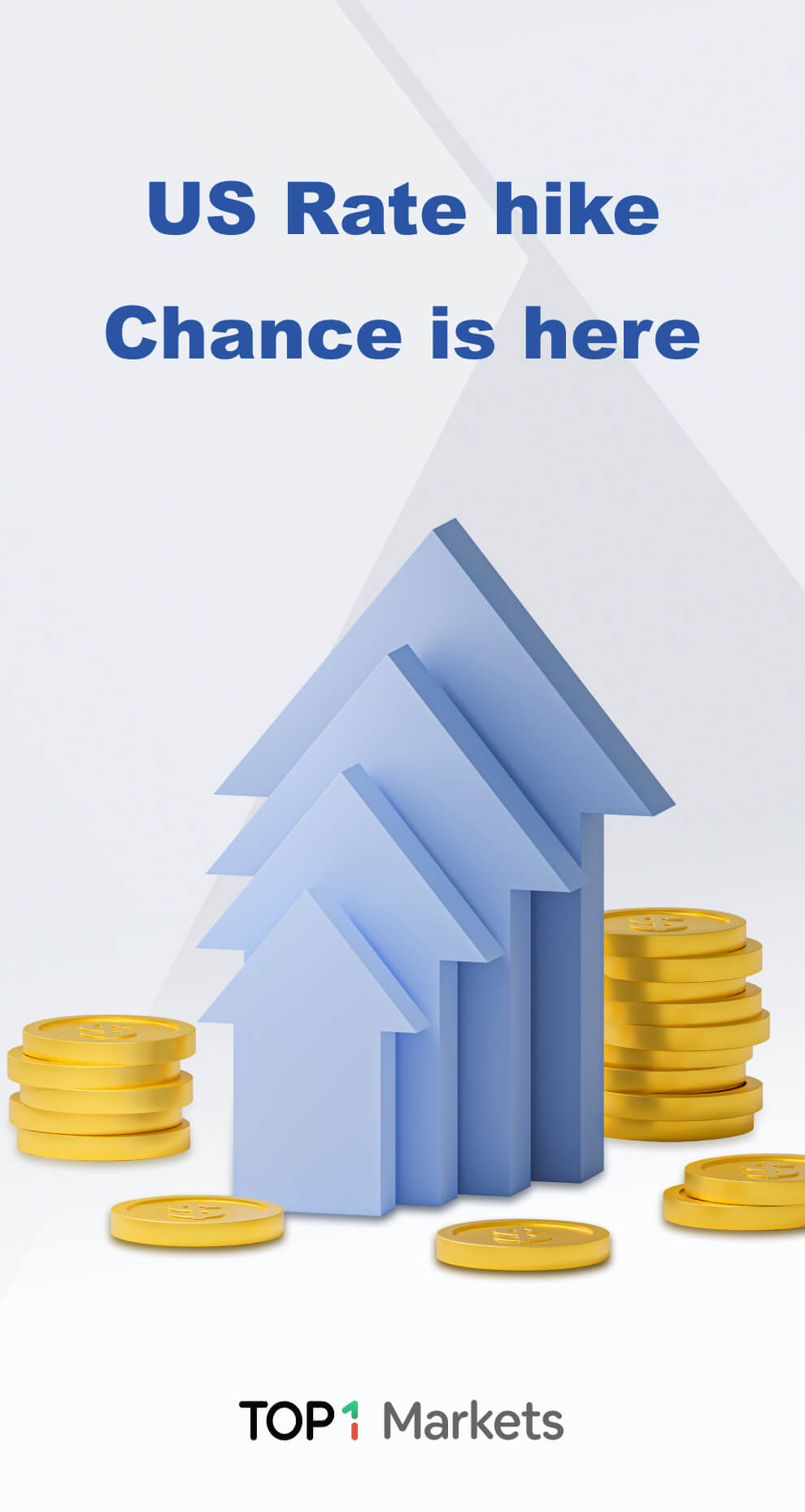
The Canadian banking industry has long been connected with safety and security. Whether you’re a savvy investor or merely evaluating prospective earnings in the near future, the bank you choose significantly impacts the outcome.
Canadian bank stocks are currently on a full-on uptrend, and rising interest rates and inflation compound this. Given the favorable macro environment, there are grounds to believe this large banking rise might be an investment opportunity.
Table of Contents
What are bank stocks?
A bank is a regulated financial entity that accepts deposits and makes loans. Other services provided by Canadian banks include investment banking and insurance.
Investors can buy shares of a publicly listed bank’s stock and therefore become part-owners of the bank.
The Canadian Office of the Superintendent of Financial Institutions regulates banks (OSFI).
What are the characteristics of an excellent bank stock?
Investors use several major indicators to analyze the value and growth potential of a stock. According to the Ontario Securities Commission, below are a few of these indicators: (OSC).
Market capitalization, or market cap, is the entire worth of a company’s outstanding shares of stock. Multiplying the stock price by the total number of outstanding shares yields the result. The market capitalization helps investors to compare the relative size of two companies.
Price-to-earnings ratio (P/E): This is the ratio between a company’s stock price and its earnings per share (EPS). Calculated by dividing the current price per share of a company’s stock by its earnings per share (EPS). The P/E ratio reflects whether the price of a stock is high or low relative to its earnings.
This is the ratio between the market capitalization of a firm and its book value. It is computed by dividing the price per share of a company’s stock by its book value per share. A low P/B ratio shows that investors are paying less for more book value when identifying prospective stock purchases. This is because a low P/B ratio suggests that investors are paying less for greater book value.

The dividend yield is the ratio between the annual dividends paid by a firm and its stock price. Calculated by dividing the yearly dividend per share by the share’s price. It informs investors of the amount of cash flow they are receiving.
Dividend payout ratio (DPR): This is the proportion of a stock’s earnings that are paid out as dividends to investors. It is computed by dividing yearly dividends per share by earnings per share. The DPR reveals how effectively a company’s dividend payments are supported by its earnings.
Are Canadian banks a smart buy now?
After a substantial buy at the end of 2021, Canadian investors are likely pondering whether or not Canadian bank stocks are a good investment now. Historically, there has never been a “bad” moment to buy or increase your stake in these blue-chip companies.
Certainly, a significant portion of the big potential was absorbed in late 2021, when Canada’s top banks saw a parabolic surge to conclude the year. But with a rate hike in March 2022 and the probability of many more in the future, this should be a rather powerful tailwind for Canadian financial institutions.
In addition, they are some of the most stable corporations in the country and should be included in the portfolios of many Canadians regardless of the economic climate.
Best Canadian bank stocks
Goeasy Ltd (TSE: GSY)
This list consists primarily of significant Canadian banks, and they are the greatest bank stocks in the nation.
As an extra bonus, we’ve included Goeasy Ltd., a very powerful alternative lender in Canada, on the list (TSE: GSY).
Lately, alternative lenders have skyrocketed in popularity since many Canadians are refused by large banks and must turn to smaller organizations in order to obtain financing.
This does create the idea that Goeasy’s clientele is highly high-risk, but this is not the case.
In reality, the bulk of Goeasy’s clientele has smaller debt burdens than customers of large banks. Why? They do not have a mortgage. In the great majority of circumstances, this will be the top priority for any Canadian in terms of payment.
What does Goeasy do? The firm offers financing solutions for the acquisition of furniture, electronics, and appliances, as well as unsecured loans to consumers in need of cash. It has two key categories, easyhome and easyfinancial, with easyfinancial generating the majority of income.
The firm has had considerable growth in recent years and was a Stocktrades Premium choice in 2019, rising over 300 percent since then. Despite rising interest rates, Canadians may still borrow at incredibly low costs, and this is producing extraordinary increases in the company’s top and bottom lines.
In terms of dividend growth, the corporation is also exceptional. The firm has increased its dividend by more than 35 percent over the past five years, and its most recent increase in the mid-38 percent area exceeds this trend.
The firm is a Canadian Dividend Aristocrat, and with a payout ratio in the mid-teens, there is much possibility for future dividend growth.
Late 2021 and early 2022 witnessed a substantial price correction for the corporation. Even though Goeasy is well-capitalized, has an excellent balance sheet, and is profitable, it is far more prone to volatility than the other big banks on our list.
With a beta greater than 2, this firm will likely beat the market while it is rising but underperform when volatility is high.
Canadian Imperial Bank Of Commerce
The CIBC delivers a ‘juicier’ dividend yield compared to its competitors, following another Toronto-based money-making machine. It is also the sixth-largest bank in the north, with 1,200 branches and 44,000 workers.
Based on its past performance, it does not appear that it will cease any time soon.
Over the years, CIBC has established itself as one of the greatest Canadian bank stocks for investors to buy. Its target market is millions of individual, company, and corporate clients from across the world who need expert assistance for wealth management, commercial banking services, capital markets, and sustainable growth via various platforms.
Even if you are uncertain about your first investment, you can be confident that CIBC has the potential to eventually outperform its competitors. Investments are certain to yield a favorable return.
National Bank Of Canada
National Bank of Canada is certainly one of the top Canadian bank stocks, despite being the smallest of the “big six.” The bank has demonstrated remarkable resilience and recovery potential despite its local emphasis (particularly in comparison to other of Canada’s more internationally focused banks) throughout the previous two decades.
The bank lost around 50 percent of its value during the Great Recession by December 2008, but it rebounded and surpassed its pre-recession value by the end of 2010. Approximately 48 percent of the stock’s value was lost during the most recent 2020 decline. It has not yet entirely recovered, but it is near.
In addition to being a dividend aristocrat, the National Bank of Canada has boosted its dividends for ten consecutive years. Currently, it offers a respectable 4.1% yield, but if you had the opportunity to buy in the firm during a market crisis, you could lock in a much higher yield.
I placed National bank at the top of my list because of the attractive combination of dividends and capital growth it provides. Its ten-year CAGR (dividend-adjusted) is 12.4%, which is close to the second bank on our list, but when you hold an investment for a very long period, even 1% may make a significant difference. And 12,4% is an impressive growth rate.
If you put $10,000 in the firm at age 30 and allow it to grow at a rate of 12.4% each year, you may have around $500,000 by the time you retire at age 65. According to the report from the previous year, the bank had 2.7 million customers, 495 locations, and $565 billion in assets under administration. The majority of the bank’s revenue is generated in Quebec (55 percent ), and the remainder comes from other provinces (26%) and overseas businesses (19 percent ).
Equitable Group Inc
Equitable Group Inc. (EQB.TO) is the parent company of Equitable Bank and EQ Bank. It was created in 1970 and had assets of over $42 billion.
The primary focus of Equitable Bank is residential and commercial mortgages, whereas EQ Bank is one of the most popular online banks in Canada.
Recently, The Equitable Group bought Concentra Bank (With Financial). This transaction is anticipated to boost Equitable Bank’s total assets by $11.3 billion, making it the seventh-largest bank in Canada.
In 2021, it also announced a record net income of $292,500,000.
As of this update, Equitable’s stock price is down more than 17 percent year-over-year (June 14, 2022).
Bank of Montreal (TSE: BMO)
The Bank of Montreal (TSE: BMO) was the hardest impacted bank during the epidemic. Throughout most of 2020, the bank lagged behind its competitors.
Until the markets realized that it was severely undervalued, it was not one of the best-performing banks.
The Bank of Montreal is one of the ten largest banks in North America and has paid continuous dividends since the early 1800s, the country’s longest run.
The bulk of its income is derived from the Canadian economy, making it one of the most reliant Canadian bank stocks in its home nation. However, it also has substantial (and expanding) exposure south of the border.
It is important to note that despite the company’s substantial exposure to Canada, it has the lowest exposure to the Canadian housing market, which many investors view as a bubble ready to burst.
In addition, the Bank of Montreal has been one of Canada’s most consistently performing banks. In reality, the corporation has gained considerable ground in recent years due to its remarkable success. As a result, it has been the top-performing Canadian bank over the past decade, second only to National Bank over the past five.
At the time of writing, despite its extraordinary performance, the stock is trading below its 3, 5, and 10-year historical averages. And the firm is anticipated to be one of the fastest-growing banks on this list, with estimated earnings of $18 per share in 2024, representing a 38 percent increase from Fiscal 2021.
Bank of Nova Scotia (BNS)
Scotiabank is the largest international bank in Canada and the largest provider of financial services in the Americas. The bank serves 25 million customers globally and has a presence in personal and commercial, corporate and investment banking, wealth management, and capital markets.
With a 185-year history, the bank has established a vast network of over 960 branches, over 3,600 automated banking machines in Canada, and 1,800 worldwide branches.

Scotiabank has a broad geographic presence in attractive markets in Latin America (71 percent of sales), the Caribbean and Central America (25 percent of revenues), and Asia (11 percent of revenues) (4 percent ). It operates via Canadian banking (49% of revenue), international banking (36% of revenue), and global banking and markets (15% of revenue).
Toronto Dominion Bank
Toronto Dominion Bank is a leading Canadian bank providing banking products and services. The Toronto Dominion Bank is a significant Canadian bank that provides banking services throughout Canada and the United States. Based on total assets, it is the seventh-largest bank in North America. The bank was created in 1955 by the merger of The Bank of Toronto and The Dominion Bank. Over ninety percent of TD Bank’s overall revenues are derived from retail sales.
The bank operates in three business segments:
- Canadian retail banking (53% of most recent revenue)
- U.S. retail banking (47% of most recent revenue)
- Wholesale banking
More than 25 million clients globally and almost 13 million digital customers have access to a vast array of retail, small business, and commercial banking products and services from TD Bank.
The Toronto Dominion Bank maintains over 1,250 branches throughout the Northeast, Mid-Atlantic, Metropolitan Washington, D.C., the Carolinas, and Florida. It has the number one or number two market share position for the majority of its retail items in Canada. Four of the top ten metropolitan regions and seven of the ten wealthiest states in the United States are served by the bank.
Royal Bank of Canada
The final major bank to examine is the Royal Bank of Canada, which fluctuates between being the largest and second-largest bank by assets in Canada. The company’s market value exceeds $161 billion, and its yearly revenue exceeds $39 billion.
The size of the Royal Bank of Canada is its primary competitive advantage. The corporation holds a commanding presence in Canada, making it one of the most recognizable banks in the area. Therefore, the Royal Bank of Canada is ranked first or second in various banking areas. This provides the corporation with a tough consumer position for rival banks to imitate.

This leadership position extends to the international market, where Royal Bank of Canada is regarded as one of the industry’s most recognizable names. Royal Bank of Canada has also expanded into the United States, including the 2015 acquisition of City National Bank. This region has contributed significantly to this company’s success in recent years.
We anticipate that Royal Bank of Canada’s earnings per share will increase by 7 percent annually over the next five years.
The corporation maintained a consistent dividend from 2008 to 2010 but has increased every year since then. This includes an increase of 11.1% for the payment date of February 24, 2022. Today, the stock offers a dividend yield of 3.4%.
The stock is now trading at 12.8 times our projected profits per share of $8.73 for 2022. This is just over our five-year price-to-earnings ratio forecast of 12.3. Multiple compression might be a 0.8 percent drag on yearly returns throughout this time frame.
We anticipate that the Royal Bank of Canada will provide annual returns of 9.6% through 2027. An earnings growth rate of 7 percent and an initial yield of 3.4% are anticipated to be largely offset by a modest degree of multiple compression.
Final thoughts
The coverage of Canadian bank stocks is far less than that of the big U.S. banks. Nonetheless, income and value investors should monitor Canadian bank stocks, and many have substantially lower valuations and larger dividend yields than their U.S. rivals.
In 2021, TD Bank, Bank of Nova Scotia, Bank of Montreal, and Royal Bank of Canada were immensely successful banks whose earnings per share have increased rapidly. And all four offer fair values and dividend yields significantly higher than U.S. bank stocks.
FAQs
How to buy the best Canadian bank stocks?
It is easier than you would imagine. You must first locate a trustworthy stock broker to acquire access to the Toronto Stock Exchange via a trading platform. You may also acquire shares via exchange-traded funds (ETFs) or other Canadian stock markets.
Your next step will be to choose the amount of money you are willing to invest and to select a bank that suits your needs. Through your broker’s trading platform, this is a simple online task.
Are Canadian banks a good investment?
Due to the omnipresence of banks in our culture, investing in this industry appears to be a low-risk undertaking with a stable income stream.




